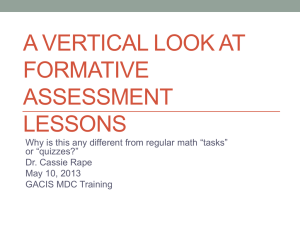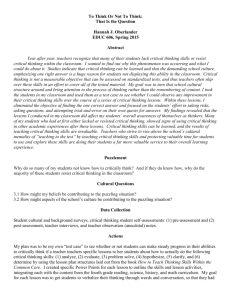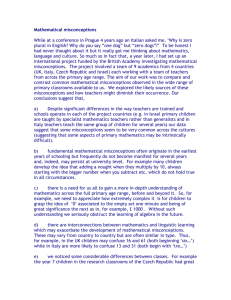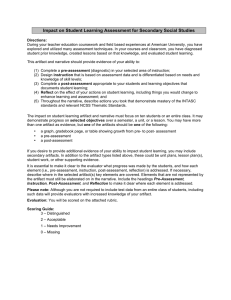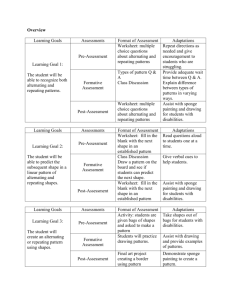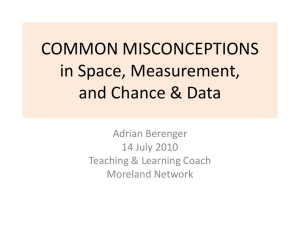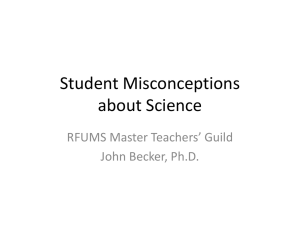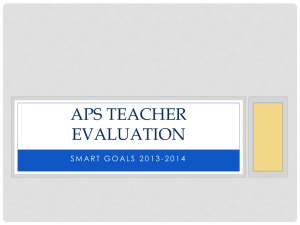Concept development and Problem Solving
advertisement
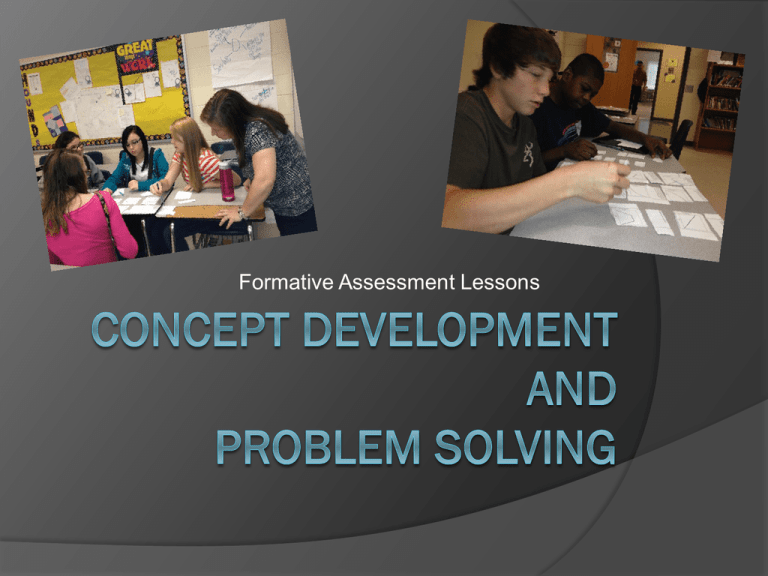
Formative Assessment Lessons Stephanie Finn, Paulding County Amy Lundy, Jones County Kami Wyse, Hall County Commonalities 2/3 of the way through the unit. Pre-assessment/Post assessment Teachers give feedback to pre-assessment Students are paired based on preassessment performance Not graded Accessible to ALL students Make effective use of Standards for Mathematical Practice Concept Development Concept Development lessons are intended to assess and develop a students’ understanding of fundamental concepts through activities that engage them in classifying and defining, representing concepts in multiple ways, testing and challenging misconceptions and exploring structure. Genres of Concept Development Lessons Classifying mathematical objects Interpreting multiple representations Evaluating mathematical statements Exploring the structure of problems Structure of Concept Development Lessons--Student Students complete an assessment task individually Whole class introduction Collaborative work on a substantial activity Students share their thinking Students revisit the assessment task Structure of Concept Development--Teacher Planning the lesson Framing the task Analyze the pre-assessment and offer feedback Students will be grouped based on COMMON misconceptions Whole group introduction Structure of Concept Development--Teacher Facilitate the task, asking questions Facilitate the sharing of work Whole group discussion Give feedback questions Post-Assessment Analyze post-assessment Mistakes and Misconceptions Why do students make mistakes in mathematics? What different types of mistakes are there? What causes these mistakes? How do you respond to each different type of mistake? Why? Grouping based on… Mistakes and misconceptions made on the pre-assessment Look for common misconceptions This helps students get what they need from the task Problem Solving Problem Solving FALs are intended to assess and develop students’ capacity to select and deploy their mathematical knowledge in non-routine contexts and typically involve students in comparing and critiquing alternative approaches to solving a problem. Structure of Problem Solving Lessons--Students Complete an assessment task individually “Having Kittens” Activity Whole class introduction Reflect on feedback question individually Collaborative work with a student whose approach is different The collaborative pair will work to create a third solution that is even better Checking posters Sharing of work Review sample work Revisit the assessment task Structure of Problem Solving-Teachers Planning & Preparation Framing the task Analyze the pre-assessment and give feedback Whole class introduction Analyze student work Allow students to reflect on feedback questions and improve their own work Structure of Problem Solving-Teachers Facilitate collaborative work Students are paired based on different approaches to the assessment task Facilitate the sharing of work Whole group discussion Sharing sample work Give the post-assessment Analyze post-assessment responses Grouping Students are to be grouped based on different approaches to reaching a solution Practical Advice Allow students time to understand and engage with the problem Offer strategic rather than technical hints Encourage students to consider alternate methods and approaches Encourage explanation Model thinking and powerful methods Differences Intended to assess and develop understanding of fundamental concepts Feedback given after task but before postassessment Students are grouped based on common misconceptions from preassessment. Concept Development Intended to assess and develop capacity to select and deploy mathematical knowledge in non-routine context Feedback given as part of task Students are grouped based on different strategies. Problem Solving Ability Levels and FAL’s Personal Experiences Personal Experiences Amy Lundy’s Benchmark Scores– Powerful Data Results 1st Nine Weeks 2nd Nine Weeks 3rd Nine Weeks 83% 79% 93% Without FAL Without FAL Using FAL
